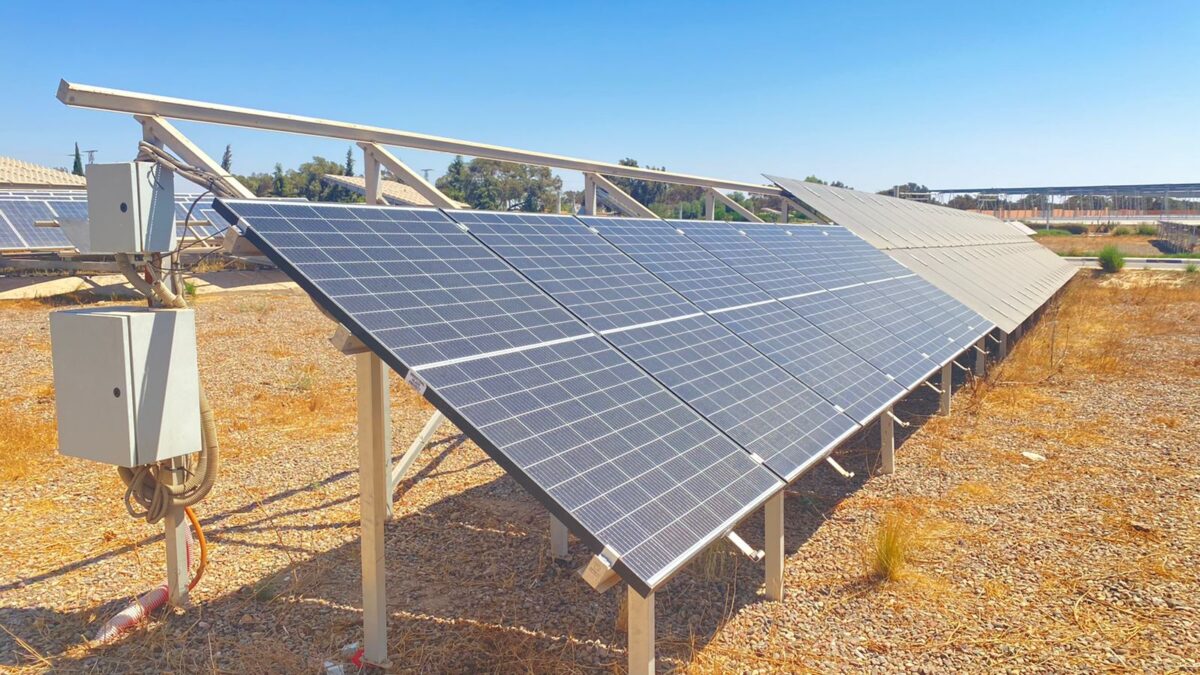From pv magazine Global
A major yet often underestimated issue, soiling – a gradual covering of the solar module surface by fine particles such as dust, dirt, or sand – can badly affect the performance of a PV system. A real-world study was recently conducted at the Green Energy Park research platform in Ben Guerir, Morocco, to evaluate the performance of antistatic and hydrophobic coatings for PV panels in challenging, semi-arid weather conditions.
The study, done in collaboration with Portuguese anti-soiling specialist ChemiTek Solar, involved testing various coating and cleaning strategies on five PV systems, all featuring the same technologies and electrical configurations.
The first PV system remained uncleaned and did not undergo any coating or cleaning solutions. The second PV system was periodically cleaned with just water. The third PV system employed ChemiTek’s Solar Wash Protect (SWP) cleaning and antistatic protection solution. The fourth and fifth PV systems, the company’s other solutions D-Solar Defender (DSD) and Industrial Glass Protect (IGP) respectively, employed unique combinations of two hydrophobic coatings.
After nine months of operation, the results demonstrated significant efficiency gains in the coated PV panels compared to the reference system. During the initial three-month cleaning period, the average efficiency gain of the coated PV panels was approximately 10%. In the subsequent non-cleaning period of six months, the efficiency gain remained around 5%. The cumulative energy gain of the coated systems, compared to the water-cleaned reference, reached an average of 3% after the outdoor exposure period.
The presence of the coatings on the PV modules significantly reduced the quantity of water needed to clean them. The SWP cleaning and antistatic protection solution, for instance, required 50% less water compared to the system cleaned without a cleaning solution. The SWP detergent for solar module cleaning and protection was more successful at dust removal during the dry season (August-February) with low rain rates. However, during the rainy season (March-April), IGP outperformed SWP and DSD, with a small difference in PV performance.
“This study demonstrates the significance of using new cleaning strategies such as anti-soling coatings in dry areas to enhance the performance of photovoltaic systems, which may be useful for investors, researchers, and engineers interested in grid-connected photovoltaic and self-cleaning technology,” the researchers said in “Performance Analysis of Innovative Cleaning and Soiling Mitigation Solutions in the Semi-Arid Climate of Benguerir, Morocco,” which was recently published in Heliyon.
This content is protected by copyright and may not be reused. If you want to cooperate with us and would like to reuse some of our content, please contact: editors@pv-magazine.com.









By submitting this form you agree to pv magazine using your data for the purposes of publishing your comment.
Your personal data will only be disclosed or otherwise transmitted to third parties for the purposes of spam filtering or if this is necessary for technical maintenance of the website. Any other transfer to third parties will not take place unless this is justified on the basis of applicable data protection regulations or if pv magazine is legally obliged to do so.
You may revoke this consent at any time with effect for the future, in which case your personal data will be deleted immediately. Otherwise, your data will be deleted if pv magazine has processed your request or the purpose of data storage is fulfilled.
Further information on data privacy can be found in our Data Protection Policy.